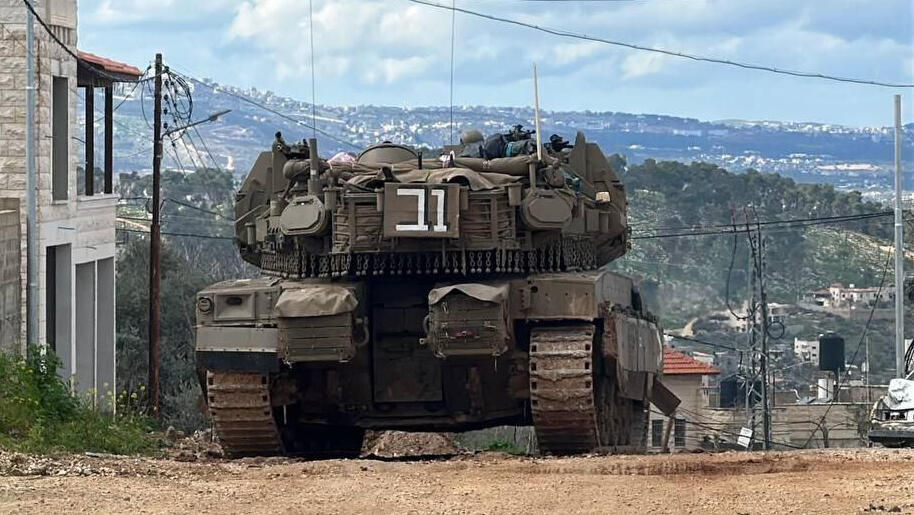This week, tanks entered the city of Jenin again, after 22 years, and in fact since the second intifada (2000), with an emphasis on Operation "Defensive Shield". This action, which indicates an escalation in the operation taking place in Judea and Samaria over the past three years, since the beginning of Operation "Wave Breaker" (2022), may in fact indicate from perspective the effectiveness of the State of Israel's security doctrine in Judea and Samaria, with an emphasis on the interfaces with the Palestinian Authority.
The maneuvering operations in Jenin in the last generation began even before Operation Defensive Shield, a series of operations called "Blunt Knife" began at the end of 2021, and their goal was to damage the terror infrastructure emanating from the city, with an emphasis on its refugee camp. Later on, the fighting in the city intensified and became one of the most famous of the Second Intifada, with an emphasis on the city as a perpetrator of attacks in the Afula and Haifa areas.
It should be remembered that the Jenin area was evacuated from IDF troops as early as 2005, with the disengagement that included the settlements of northern Samaria, Homesh, Ganim and Kadim, in addition to what took place in the Gaza Strip, but with a significant difference – Jenin was supposed to have full control of the Palestinian Authority, both civil and security.
In contrast to what happened in the Gaza Strip after the 2005 disengagement, it was actually more convenient for the PA to have security control in Jenin than in the Gaza Strip, where Hamas was under control, and with an emphasis on the violent coup that took place against PA members there in 2007 – in fact, there is no reason in the world that the Palestinian Authority should not succeed in fulfilling its responsibility in the Jenin area given the territorial contiguity towards Nablus vis-à-vis Ramallah.
IDF operating in Jenin
(Video: IDF Spokesperson's Unit)
But what has been happening in Jenin over the past decade points to a clear fact – the Palestinian Authority has been completely weakened in the fight against the terrorist elements in Jenin, which has re-empowered the city and its environs as a terrorist "generator" that requires particularly powerful action, once again, against the terror that has emerged from this area, and which illustrates, like Gaza, that every area that the IDF evacuates becomes a dangerous center of terrorism.
<< Get the Ynetnews app on your smartphone: Google Play: https://bit.ly/4eJ37pE | Apple App Store: https://bit.ly/3ZL7iNv >>
From this perspective, it can be clearly stated that the Palestinian Authority is not a reliable address when it comes to fighting jihadist Islamist terrorism, which proves that the vision of a "two states solution" is a mirage, at the very least. This can also be attributed to the fact that the Hamas movement has become very strong in Judea and Samaria, and certainly in light of the growing support from the Palestinian public for the events of October 7, 2023. This indicates that Fatah has lost its grip and that the area has become particularly radical, and therefore it is necessary to ask: Where are we headed in the context of the security doctrine in Judea and Samaria?
It is absolutely clear that a fundamental change is required to the security concept in the Judea and Samaria area, but the choice will remain between military control by IDF and continued civilian control by the PA, and at the very least, including the context of repeated operations in Area A, including the possibility of full occupation and military rule, or in other words, Jenin as a metaphor for Gaza. Matter-of-factly, this is the collapse of the Oslo Accords, with all that it entails, and the possible consequences are the collapse of the Palestinian Authority as a whole, with an emphasis on the fact that the Judea and Samaria region is already talking about the post-Abbas era, and the lack of a clear forecast of what might happen.
 Col. (Res.) Ronen ItzikPhoto: Jenny Dvir
Col. (Res.) Ronen ItzikPhoto: Jenny DvirOne way or another, the situation today is not similar to the situation in the early 2000s – the number of Jewish settlers in Judea and Samaria has doubled, and the disintegration of the existing arrangements poses a clear security threat to the Jewish settlements in the area, and to the substantial impact on the entire fabric of life even west and north of the Green Line. Hence, it is absolutely clear that the logic of "Defensive Shield", including the separation barrier that was erected at the time, must take a real turn, and that what was can no longer be.
- Col. (res.) Dr. Ronen Itsik is a senior researcher at the Israel Defense and Security Forum - IDSF and the author of "The Man in the Tank."




